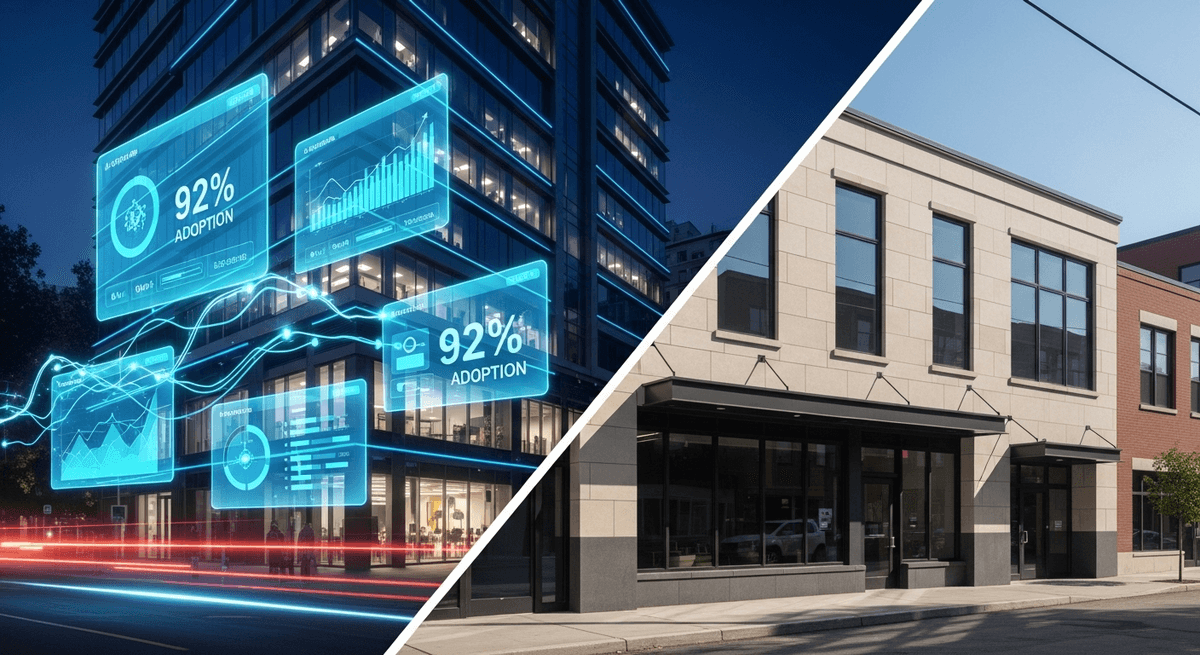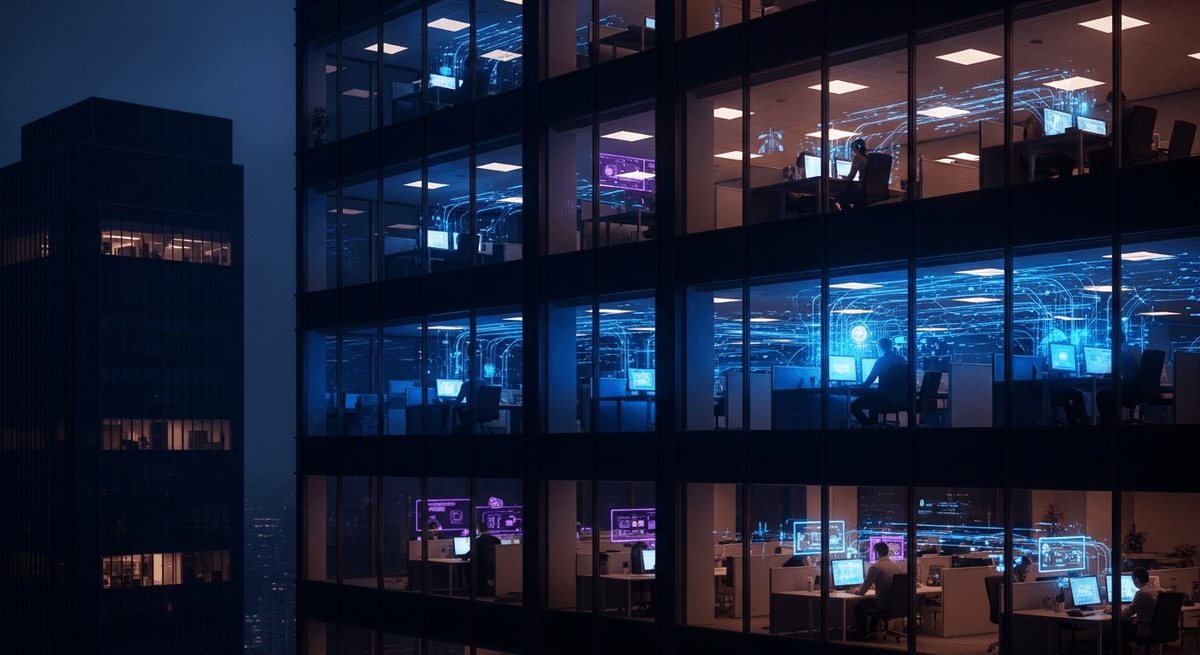If you're in commercial real estate and still treating AI as a buzzword or future concern, you're on the wrong side of the GenAI Divide.
MIT's "State of AI in Business 2025" report, produced by Project NANDA, offers a sobering look at AI adoption across sectors. While $30–40 billion has already been poured into GenAI tools, 95% of those efforts are generating zero measurable return.
The findings aren’t just about tech companies—they signal a turning point for all sectors, including CRE. The key takeaway? Organizations that fail to integrate learning-capable AI tools into real operational workflows will be left behind.
1. The GenAI Divide: High Adoption, Low Impact
Over 80% of organizations have explored AI tools like ChatGPT or Microsoft Copilot, and nearly 40% claim to have deployed them. But MIT found that most implementations fall flat because they don’t learn, evolve, or align with business workflows.
"We’ve seen dozens of demos this year. Maybe one or two are genuinely useful. The rest are wrappers or science projects."
— CIO, participating in MIT research
This disconnect is particularly dangerous in real estate, where AI can dramatically improve NOI, tenant satisfaction, and ESG outcomes if deployed strategically. Most CRE portfolios, however, are still dealing with:
- Fragmented building systems
- Siloed data
- Vendor-controlled infrastructure
These are the exact conditions that cause AI projects to fail.

2. The Shadow AI Economy: Your Tenants Are Already There
While enterprises struggle with implementation, employees and tenants are already using consumer AI tools behind the scenes. MIT found 90% of surveyed employees use ChatGPT or similar tools for work, often without IT approval.
For CRE, this raises a critical question: If your tenants are AI-native, is your building AI-ready?
AI-native tenants will expect:
- Instant, private, high-speed connectivity
- Smart access, automation, and service orchestration
- Data privacy and control
If your digital infrastructure isn’t built to support these expectations, you risk losing top-tier tenants.

MIT outlines the biggest reason AI deployments stall: most tools can’t adapt or improve over time. They don’t remember previous interactions. They can’t fit into daily operations without constant human prompting.
That’s why only 5% of enterprise-grade tools cross into production. And why tools that actually learn — agentic systems that adapt to workflows — are winning enterprise deals.
In the built environment, this is a wake-up call:
- AI for HVAC or lighting that doesn’t adapt to tenant behavior? Dead on arrival.
- Predictive maintenance that can’t improve over time? Money wasted.
- Chatbots that can’t integrate with leasing workflows? Broken UX.
4. CRE’s Digital Infrastructure Blind Spot
Digital infrastructure is where most CRE firms are vulnerable. MIT highlights that the failure isn’t just tech—it’s organizational structure, vendor control, and workflow mismatch.
The good news? CRE owners don’t have to build it themselves.
Successful adopters buy, not build. They work with partners who offer deeply customized, integrated solutions with a clear ROI.
That’s where OpticWise comes in.
5. Cross the Divide with OpticWise
OpticWise delivers what MIT says is essential:
- Learning-capable systems (ElasticISP®, BoT®)
- Workflow integration (via the 5C™ Framework)
- Private, branded connectivity aligned to tenant demands (5S® UX)
CRE leaders must treat digital infrastructure as a business intelligence asset. Not a sunk cost. Not a tech experiment.
Digital infrastructure is the physical layer where AI lives. Own it, and you own the future.
6. The ROI Lives in the Back Office
MIT found that while most AI budgets go to sales and marketing, the most significant returns come from back-office automation: BPO replacement, agency spend reduction, and smarter vendor management.
CRE parallels are obvious:
- Automate service requests, inspections, lease renewals
- Reduce reliance on third-party call centers
- Monitor energy and risk in real time
Owning your data and your digital infrastructure allows you to deploy and monetize these systems while reducing OpEx and increasing asset value.
8. What CRE Owners Must Do Today
- Conduct a PPP Audit: What do you own? What’s leaking value?
- Reclaim Control: Shift from vendor-owned networks to owner-controlled digital infrastructure.
- Build for AI: Invest in systems that learn, adapt, and integrate.
- Monetize Smartly: Turn digital services into NOI, not cost centers.
Final Word: Don’t Just Adopt AI. Own It.
The GenAI Divide is real. CRE owners on the wrong side will spend the next decade reacting. Those on the right side will lead.
At OpticWise, we help you do more than deploy AI. We help you create the conditions where AI thrives: private networks, integrated systems, owned & controlled data, and tenant-first experiences.
The future is being built. It needs data & digital infrastructure.
Own your digital infrastructure. Operate with strategic foresight. Build for the long game.
Ready to future-proof your office portfolio?
Start your PPP Audit here.
